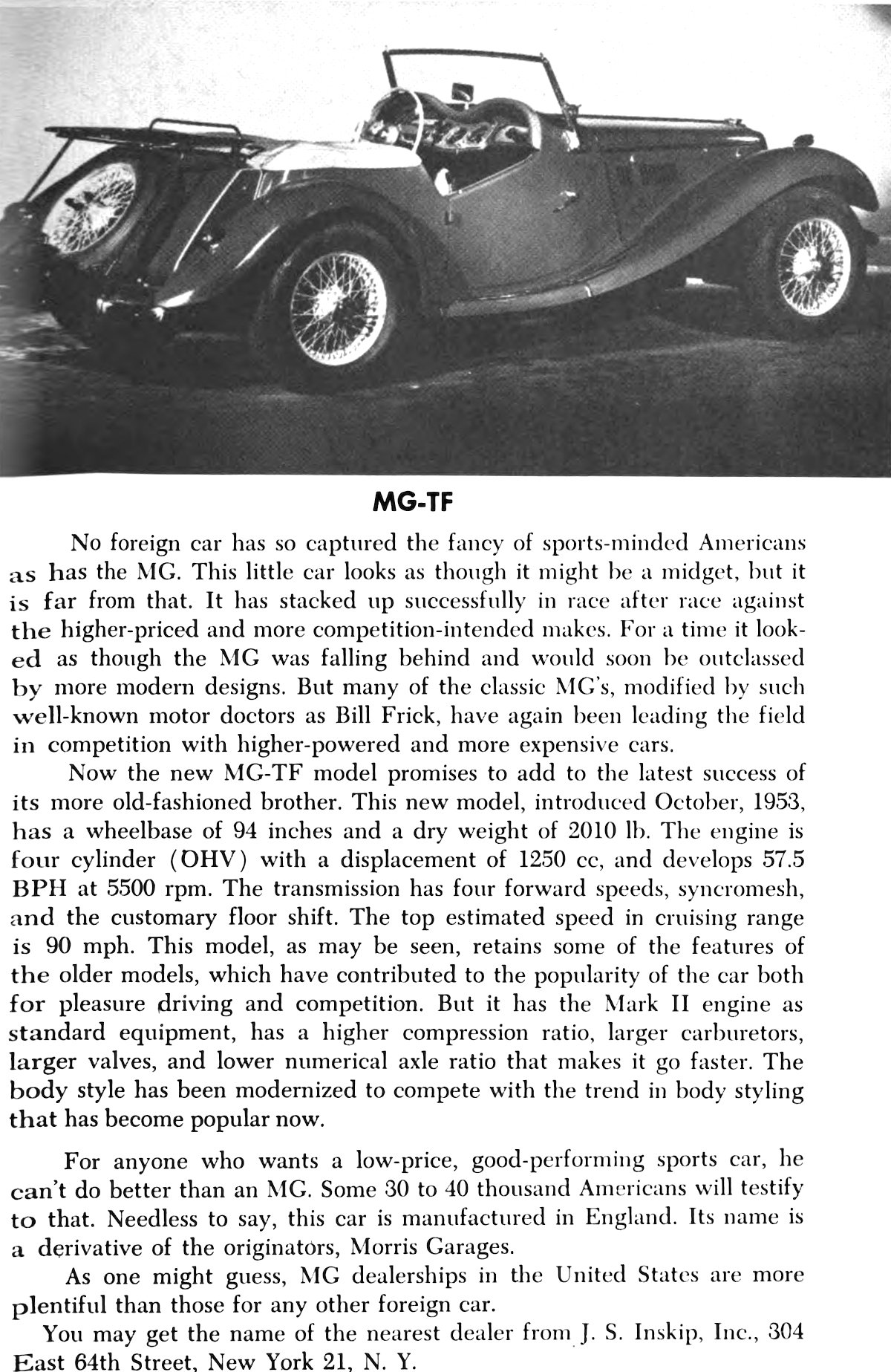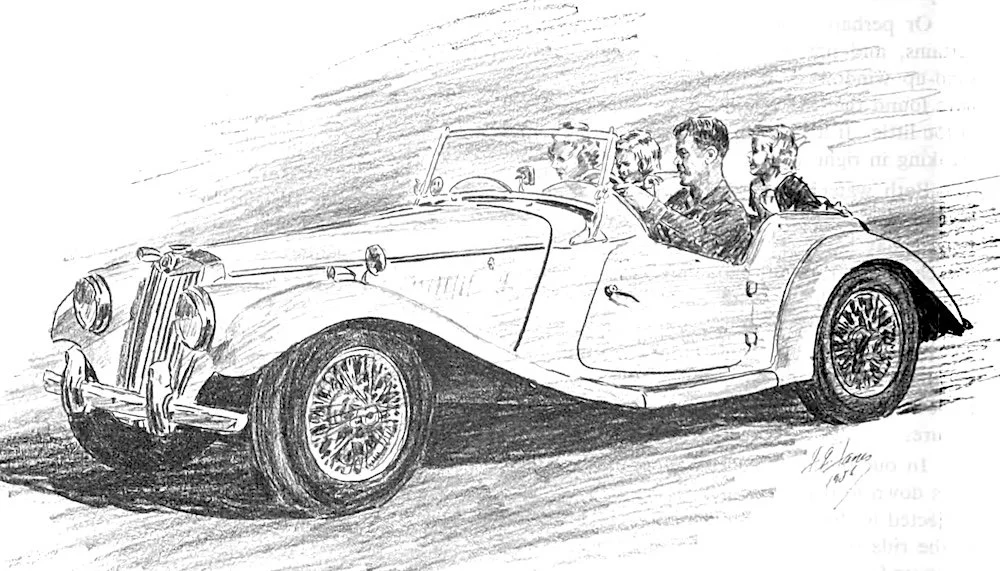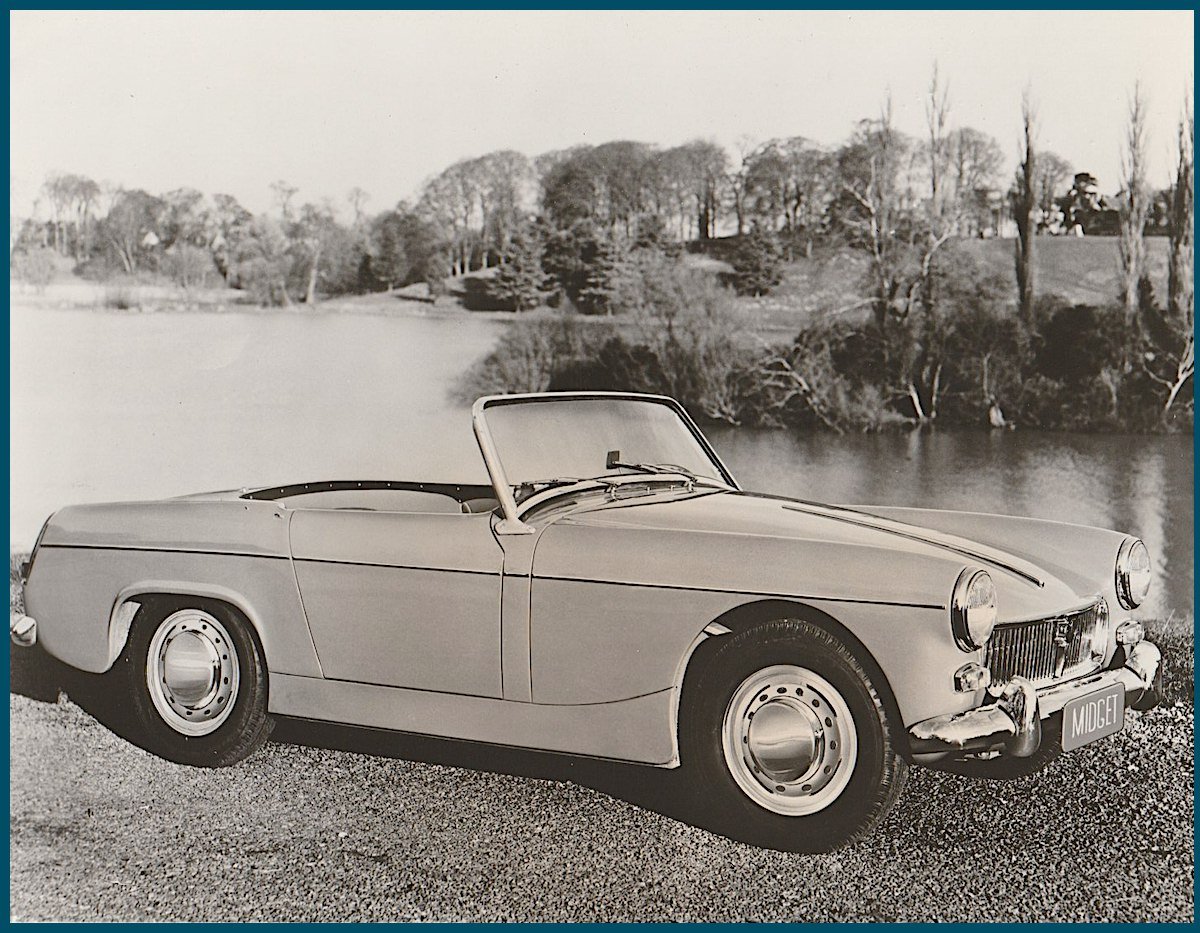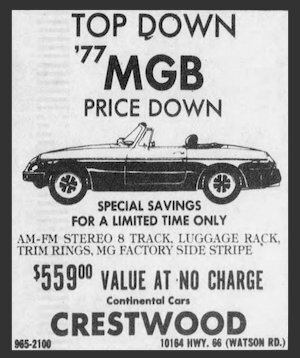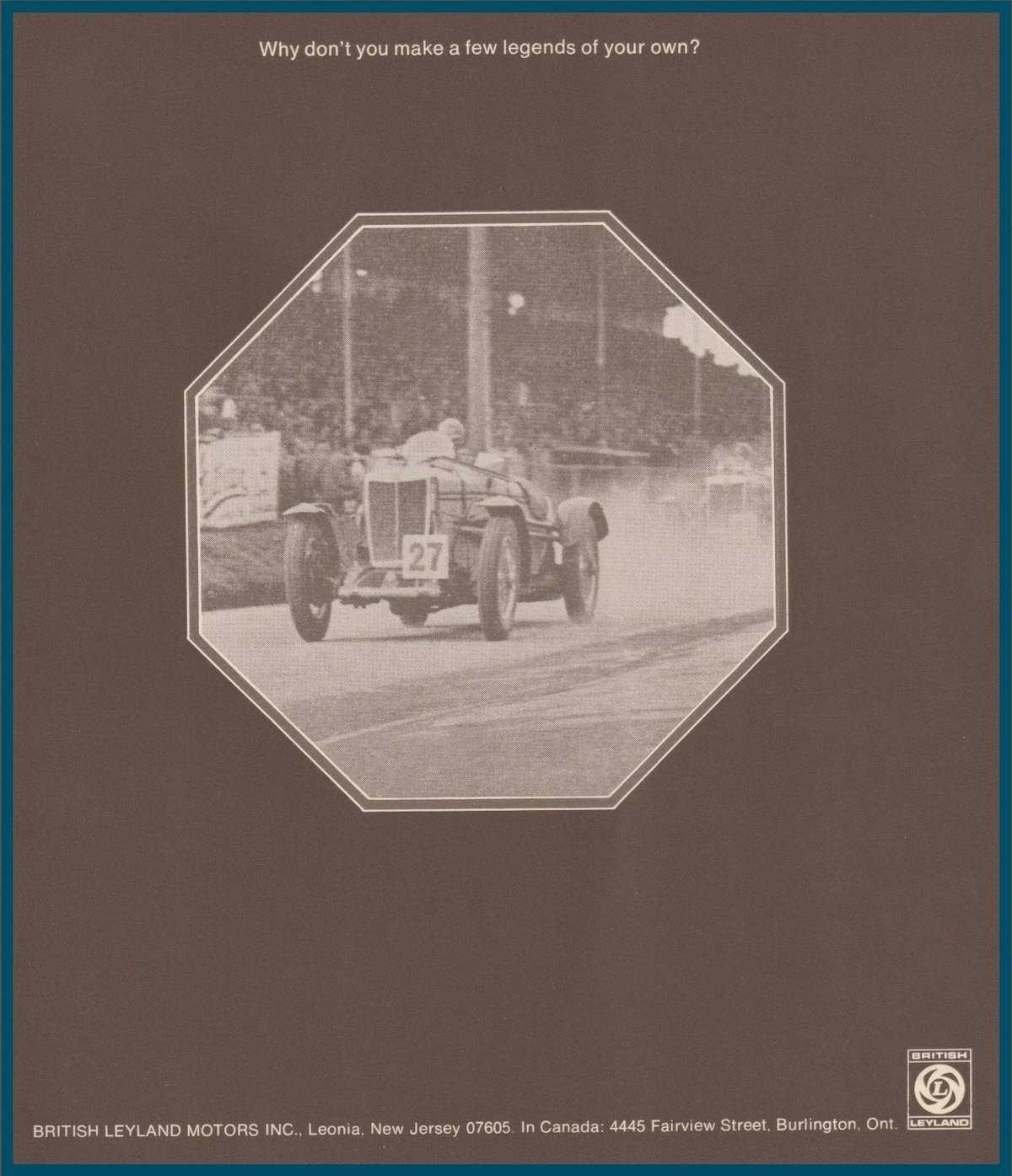The MG Car Catalog
A Chronological (well, sort of) List of
MG Cars Over the Years
New entries added all the time. Do you have an MG? Send us a photo and we will add it to the catalog - Cheers!
A quick note to begin with:
As you read down this list of MG cars, you may notice that there is no entry labeled "The First MG." Yes, there may be references to "early MGs" or perhaps "one of the first MGs," but no real notation for the actual "first MG." That is because, with the many vagaries of history, defining the "first MG" is a rather daunting task. Mr F. Wilson McComb sums this quandary up quite nicely in the beginning of Chapter Two - Bullnose Days (1922-1926) - of his book "The Story of the MG Sports Car" (1972 - St Martin's Press). Mr McComb notes:
"For almost fifty years the story of M.G.'s earliest days has been obscured by repeated attempts to oversimplify it, sometimes with scant regard for the facts. However dear it may be to a publicity man's heart, there is no more than a grain of truth in the romantic tale of Kimber building himself a Bullnose Morris special in an Oxford back-street, 'winning' the Land's End Trial with it and, flushed with success, announcing a whole range of M.G. models based on this one car. It is scarcely more logical to select one particular Morris Garages product as 'the first M.G.' than it would be to pick out one particular animal in the evolutionary series as, say, the first elephant. The M.G. did not appear overnight; it was developed gradually.
" Moreover, before being dogmatic about the first MG sports cars one must define both M.G. and sports car—either of which tasks this writer will gladly leave to braver men than he. M.G. enthusiasts cannot agree among themselves to accept any one model as a 'real M.G.', and attempts to define a sports one have broken up many a happy discussion at the bar."
I agree, although I am always open for discussion.
MG M-Type Midget (late 1928 - 1932)
1930 MG M-Type Midget. A very nice, unrestored example. Nice to see an MG that has not suffered from an over-restoration. Nice patina of age, here.
From an old newspaper clipping - 9 February 1930.
MG PA Midget (1934 - 1935)
Originally called simply the MG P-Type, the title PA was applied to differentiate the car with the upgraded version to be titled MG PB. According to the book: “MG from A to Z,” by Jonathan Wood. the production of the MG PA included 1,394 two-seaters, 498 four-seaters, 28 Airline coupes, and 53 bare chassis that went to various coachbuilders. Also, some 27 PAs were converted to PBs.
MG TC Midget (1945 - 1949)
1949 MG TC Midget
An old MGTC, back in the day when we used to drive our MGs come rain or sunshine or the dead of winter. Not sure who this guy is, or where the photo was taken - other than in the U.S. The photo was printed in March of 1953.
MG TD Midget (1949 - 1953)
MG TD Midget. The writing says, "Black - Red Wheels." Cool!
MG TF Midget (1953 - 1955)
(1250 and 1500)
An MG TF, from down in Uruguay.
An excerpt from the book “Sports Cars: Facts and Pictures” by Austin L. Conley (Greenburg Publisher, New York, 1954).
1955 MG TF 1500
MG TF Midget - Special Versions
MG TF Special Versions: From the MG Esoterica File. In Don Hayter's book "MGB Story" he mentions seeing an ephemeral MG TF, which sported heavily revamped wings, and boot area, among other modifications, shortly after joining MG. The idea came from Gerald Palmer, the Cowley-based designer. Palmer actually had three ideas for a new MG sports car: 1. A traditional model, as described above, 2. A competition model with removable wings, and 3. A modern model, with fully enclosed wings. One major departure that would have made this car much more than an upgrade of the MG TF was the use of a monocoque body, on to which the various wing designs would be attached. Or, in the case of the competition model, no wings at all. Of the three, two were built as prototypes, the traditional model and the modern model. This was, however, around the time that John Thornley and Syd Enever were developing the idea that became the MGA, so there was some reluctance from Abingdon to pursue Palmer's ideas. Plus, the use of monocoque construction was still rather new. History shows that the MGA later won out, and the two Palmer prototypes were scrapped.
MGA Roadster 1600 (1955 - 1962)
(Roadster and Coupe)
MGA 1600 Roadster. The roadsters were at times referred to as tourers.
From a February 1958 issue of an east coast U.S. newspaper, and it’s a coupe, too. So, what is correct MGA of MG A?
MG Midget Mk I to Mk III (1961 - 1974)
MG Midget 1500 (1974 - 1979)
The following is from a press release from the Hambro Automotive Corporation, which at the time was the BMC distributer in the United States:
FOR RELEASE: Friday, July 13 1961
MIGHTY MG MIDGET
The MG Midget, a new member of the world famous family of sports cars, has been introduced by the British Motor Corporation. This sleek roadster features a high performance 4-cylinder engine, styling in the tradition of its big brother MGA, and a safety-designed, all steel unitized body. BMC’s latest entry in the popular-priced sports card field sells for under $2,000. The car can hit 85 miles an hour, yet squeezes 35 miles from a gallon of gas.
So, legend has it that the chrome trim piece on the hood (bonnet) of the early MG Midget had to be deleted when after a frontal crash test the piece was found impaled on the crash test dummy. Yea, not a good thing. Note the wheel covers, similar to the Ace Discs from the 1920s.
Great P.R. photo from British Leyland. The photo was not dated but I would say the is a 1970-ish MG Midget.
Love it - hate it. The rubber bumper MG Midget. Personally, I don’t think they look as bad a many suggest. It was still a great, fun car to drive. From a period brochure, circa 1976.
MG 1100 Saloon (1962 - 1967)
MG 1100/1300 Saloon (1967 - 1971)
1964 MG 1100 Princess - from a U.S. sales brochure.
MG 1300 Saloon - from a batch of British Leyland publicity photos.
MGB Roadster Mk I to III (1962 - 1974)
MGB Roadster Rubber Bumper (1974 - 1980)
1967 MGB Roadster
MGB - 1977 newspaper advert.
MG advert from the 16 April 1978 issue of the Los Angeles Times newspaper. Funny thing about car prices.
From a comprehensive MG sales brochure - circa 1975.
MGB GT (1965 - 1974)
MGB GT Rubber Bumper (1974 - 1980)
MGB GT
Wow, an MGB GT outside of The Plough Inn - wonderful.
MGB and MGB Special Edition Classic (SEC)
With the end of production of the MGB in the fall of 1980, a few entities - some small, some large - emerged that were not quite ready to let the model simply fade away. One such entity was the MG Owners’ Club (MGOC), which in November 1980, just one month after the announcement of the end of the MGB, proffered an idea to produce an upgraded version of both the MGB and MGB GT. Then MGOC Secretary Roche Bentley announced that the club would be commissioning the building a number of cars - a limited number - called the Special Edition Classic. Perhaps “building” is not the most accurate of words to describe the plan, a more accurate word being “convert,” “modify,” or “prepare.”
What happened over the next few months is somewhat vague, and subject to revision. So the story goes (I think) … The MGOC contracted with Mallalieu Cars Ltd, a specialist shop on Besselsleigh Road in the village of Wootton, just southwest of Oxford, to assemble the cars. Mallalieu Cars Ltd, however, went out of business at about the same time as the demise of the MGB. Some of the now unemployed staff members rallied and formed a company called Abingdon Classic Cars Ltd. Apparently, this is who actually built the cars. To add confusion to the story, at least one of the extent SECs displays a dash plaque - with the serial number One - stating the car was “Specially Prepared by Mallalieu in Conjunction with the MG Owners Club.” The project, while initially well received, was short lived. The cost of the cars, which was supposed to be only slightly higher than the base MGB, ended up being upwards of 70% higher than planned. Then, there was a lawsuit by Mallalieu family over the project, attempt to prevent the marketing of the cars.
So, in the end, it is believed that only five cars were produced: one black MGB roadster, one yellow MGB GT, one black MGB GT, all sporting a turbocharged four-cylinder engine. Then there was one black V8-powered MGB roadster and one black V8-powered MGB GT. Of this group, only two are known to exist today - the four-cylinder MGB and the V8 MGB GT.
MGC (1967 - 1969)
MGC GT (1967 - 1969)
MGB GTV8 (1973 - 1976)
MG Metro (1982 - 1990)
MG Metro Turbo (1982 - 1990)
MG Metro 6R4 (1984)
MG Metro Turbo. The basic car could be called the MG Metro, the Austin Mini Metro, the Austin Metro, the Rover Metro and the Rover 100. Take your pick. Photo: Adian Pingstone
I don’t know about you, but the MG Metro Turbo looks like a fun little hatch to spirit around in.
MG Maestro (1983 - 1991)
MG Maestro Turbo (1989 - 1991)
MG Montego (1984 - 1991)
MG Montego Turbo (1985 - 1991)
MG RV8 (1993 - 1995)
MGF (1995 - 2002)
MGF 75th LE (1999)
One a rainy day in Stevelot, Belgium - just down the road from Spa - and a nice looking MGF.
As seen down in Sydney, Australia - an advert in the Sydney Morning Herald. Not sure how much $42,270 in Aussie money equate to U.S. Dollars. No real need though since the MGF was never exported to the U.S. Pity, really.
MG ZR (2001 - 2003)
MG ZS (2001 - 2003)
MG ZT (2001 - 2005)
MG ZT - T (2001 - 2005)
MG ZT 260 (2003 - 2005)
MG ZR Revised (2004 - 2005)
MG ZS Revised (2004 - 2005)
A station wagon in the U.S., an estate car in the UK - take your pick. Back in the really olden days, it might have been called a shooting brake (break), which originally was a horse-drawn passenger wagon used to bring shooting parties out the the field. How veddy, veddy civilized, but not used much anymore. A nice MG ZT on the street of Zaventem, Belgian - 2002, or so.
MG SV/SVR (2003)
MG TF (2002 - 2005)
A nice MGTF seen at a British Car Show down in New Zealand in 2010. Photo: Courtesy of a dude that goes by the handle “111 Emergence.”









